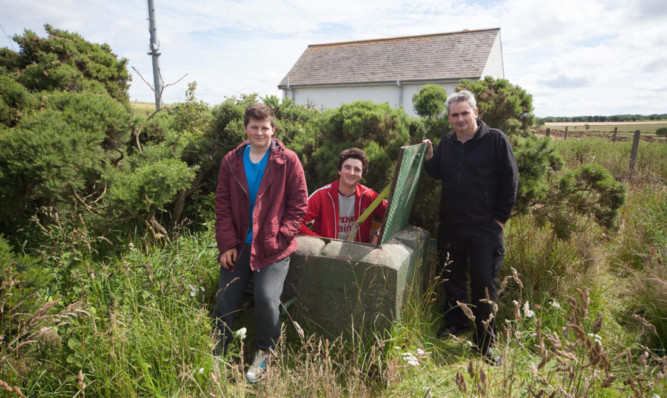It was to house a frightened few in the event the Cold War boiled over, protecting inhabitants with concrete, steel – and regulation duffel coats.
A cramped underground bunker in Aberlemno is a relic of the UK Warning and Monitoring Organisation (UKWMO) and its efforts to gauge the impact of nuclear attack from the 1960s to 1991.
It is unlikely the Royal Observer Corps (ROC) designers of 1957 imagined that their legacy would be looked after 16-year-olds.
But Lachlan MacLeod and his friends have taken a forgotten corner of international relations with the intention of restoring it.
Lachlan said the village’s abandoned observer post, even in disrepair, kindled his interest in military history at a young age.
“My brother took me down there for a look when I was pretty young,” he said.
“He’s in the Army Reserves and a lot of his enthusiasm rubbed off on me then.
“It’s just been left since 1968 and vandalised a little bit, but it’s all locked up and safe now.”
Lachlan and his friend Ronnie O’Rourke set about finding out whether the post could be restored.
The pair spent time reading up on the corps’ history, and began to source materials and repaint the interior in January.
Ronnie is a pupil at Brechin High School and Lachlan recently left school with hopes of studying engineering systems at college.
They keep in touch with the Royal Observer Corps Association, which maintains a forum for enthusiasts and the volunteers who maintain a small portion of the 1,600 posts.
The pair have had advice from the caretakers of other maintained Angus bunkers in Eliot and Edzell, which are kept by Cheryl Stewart and Jim Sherrit respectively.
“I spoke to Jim Sherrit who said we should try do it ourselves, and then spoke to the landlord who had wanted to restore it for years,” added Lachlan.
“We are now looking for the harder to find items and we would love to speak to anyone who served in the corps in Aberlemno or posts nearby.”
It reported to the regional headquarters in Craigiebarn Road, Dundee, which is maintained to this day.
The UKWMO was set up to collate information received of any impending air attack from the ROC.
In the worst case scenario, volunteers in three-man bunkers would pass data up the chain of command.
However a new spirit of cooperation and disarmament, twinned with technological advances, led to the organisation’s dissolution in 1991.
Photo by Angus Pictures
